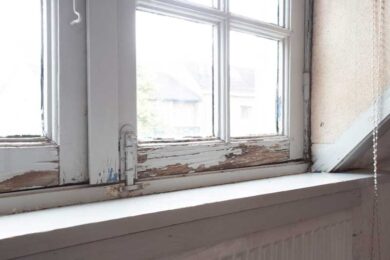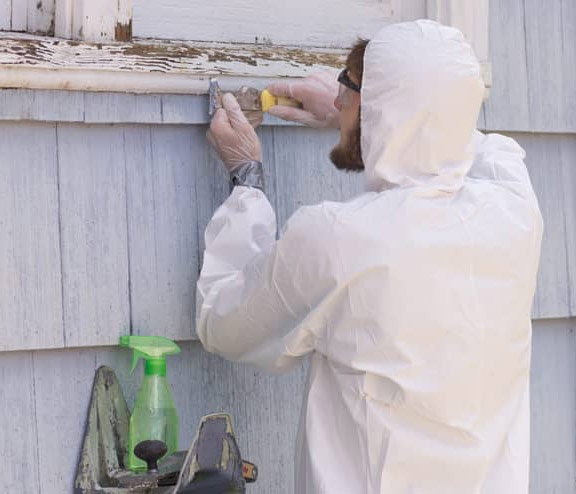Vital Tools and Approaches for Reliable Lead Offense Clean-up
Addressing lead infractions effectively demands a detailed method that blends the right devices with critical techniques. The initial step includes outfitting workers with Personal Safety Tools (PPE) to protect their wellness. Simultaneously, using specialized cleanup tools, such as HEPA vacuum cleaners and lead-specific cleansing agents, is crucial for thorough pollutant removal. Effective containment methods, including plastic sheet and adverse air stress systems, are necessary to protect against the spread of hazardous materials. Risk-free disposal techniques and stringent adherence to regulatory guidelines make certain accountable handling of harmful waste. However what are the nuanced methods that truly make a distinction?
Personal Safety Tools
Individual protective devices (PPE) is a vital part in the effective management of lead contamination cleanup. The essential PPE for lead cleanup consists of respirators, protective apparel, handwear covers, and eye defense.
Respirators, particularly those equipped with HEPA filters, are crucial for filtering system airborne lead fragments, protecting against breathing. Protective apparel, including coveralls and disposable fits, prevents lead dirt from sticking to employees' garments, decreasing the risk of second contamination.
In addition, extensive training on the appropriate usage and upkeep of PPE is vital. Workers should be educated on wearing and doffing treatments to prevent contamination. Normal inspections and replacements of PPE components are essential to keep their protective capacities, ensuring a risk-free and certified cleaning procedure.
Specialized Cleaning Equipment

An additional important device is the wet/dry vacuum cleaner, which can effectively clean up both dirt and fluid contaminants. These vacuum cleaners commonly include HEPA filters to provide an extra layer of safety. Wet wipes or tack towels are additionally critical for surface area cleaning; they are especially created to record and hold lead fragments, lowering the danger of spreading out contamination.
For even more stubborn deposits, specialized lead-removal cleansing representatives are required. These representatives are formulated to damage down lead fragments, making them easier to eliminate. Scrub brushes with durable bristles can assist in this procedure, particularly on rough surfaces where lead dust has a tendency to adhere extra strongly.
In addition, encapsulants are utilized to secure lead-contaminated surface areas, avoiding the release of lead dust. These specialized paints and finishes are designed to comply with various substratums, supplying a lasting remedy for lead control.
Efficient Containment Methods
Efficient control approaches are essential in minimizing the spread of lead contamination throughout clean-up tasks. Applying durable containment strategies makes certain that lead particles do not migrate to untouched locations, consequently shielding both workers and the atmosphere (DOH & HPD Lead Violation Removal NYC).

To enhance control, encapsulants can be used to surface areas that are not being gotten rid of or disrupted. These specialized coverings bind lead dirt, minimizing its schedule for resuspension. In addition, all personnel should use proper Personal Protective Tools (PPE), including respirators and non reusable matches, to avoid contamination spread.
Safe Disposal Practices
Making certain safe disposal techniques is a crucial component in the monitoring of lead contamination cleanup. Proper disposal alleviates the threat of lead returning to the atmosphere and jeopardizing public wellness (DOH & HPD Lead Violation Removal NYC).
Transferring lead waste needs adherence to strict standards. Utilizing accredited contaminated materials carriers ensures that the materials are handled sensibly. Documentation, including materializes describing the type and quantity of waste, need to accompany shipments to track the waste from the site of beginning to its last disposal location.
Designated contaminated materials disposal centers are furnished to take care of lead-contaminated products securely. These facilities often use advanced approaches such as stablizing, solidification, or chemical treatment to neutralize the lead before disposal. Landfilling in specialized, lined areas that avoid leachate from contaminating groundwater is a typical technique for final disposal.
Routine training for employees entailed in lead garbage disposal is vital to maintain safety standards and protect against unintended direct exposure. By adhering to these techniques, companies can considerably minimize the environmental and wellness influences related to lead contamination.
Regulatory Conformity Tips

Sticking to governing compliance is paramount in the successful implementation of lead contamination clean-up. additional reading Recognizing and following government, state, and local regulations guarantees not just the safety and health of individuals but also the lawful and monetary health of the cleanup company. The Environmental Protection Firm (EPA) sets stringent criteria, such as the Lead Remodelling, Repair, and Paint (RRP) Rule, which mandates proper certification and training for specialists handling lead-based tasks.
Compliance starts with an extensive assessment of applicable legislations and regulations. Organizations has to remain updated on any legislative modifications, which can be helped with through regular training sessions and subscribing to sector updates. Documentation is an additional important compliance aspect; keeping detailed documents of all activities, consisting of examination reports, staff member training logs, and disposal materializes, is vital.
In browse around this web-site addition, engaging with licensed lead examiners or take the chance of assessors makes certain that lead risks are properly determined and minimized. Employers have to implement making use of Individual Safety Devices (PPE) and make sure that safety methods are purely adhered to. Transparent interaction with stakeholders, including employees, customers, and regulatory bodies, will cultivate a society of compliance and liability, eventually adding to a much safer and more effective lead cleaning process.
Conclusion
Effective lead offense clean-up demands the integration of specialized tools and calculated methods to ensure safety and efficacy. Making use of you could look here HEPA vacuums, specialized cleaning up agents, and efficient containment techniques such as plastic sheet and negative atmospheric pressure systems is essential. Individual protective tools (PPE) safeguards workers from exposure, while secure disposal techniques and rigorous adherence to regulatory conformity are necessary for sensibly managing dangerous waste. Collectively, these measures substantially alleviate wellness risks and contribute to a cleaner atmosphere.